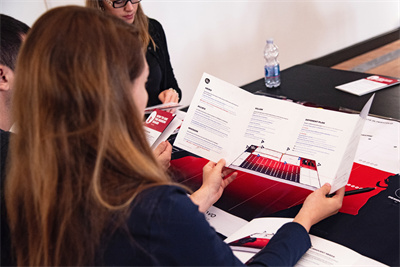Contact Us

Contact Us


Guangzhou Huaisheng Packaging Co.,Ltd.
We provide customers with quality products and provide high-quality services.
If you would like to leave us a comment please go to contact us
+86-18122240089

Brochures play an important role in corporate image communication and product marketing. It can reflect the company's comprehensive strength and product features and is also a quick and effective way for customers to understand your company.
However creating a good brochure is not an easy thing, the designer's need requires a blend of creativity, strategic planning, and a keen eye for design. In this article, we'll explore the essential design skills needed to create a brochure that not only looks great but also effectively communicates its intended message.
Before you dive into the visual elements, it's crucial to understand the brochure's purpose. Is it to inform, persuade, or entertain? Knowing this will shape the entire design process. Equally important is having a clear picture of the target audience. Enterprises will have different styles and characteristics due to differences in industries, product features, and brand images. For example, brochures for the IT industry need to be rigorous and standardized; brochures for the insurance industry need to reflect professionalism and integrity.

Layout is the basis of album design. It is like the basic frame of a house. The designer arranges and combines many elements based on this frame to finally complete the design. A well-structured layout can arouse readers' desire to read. Mastering grid systems and understanding the principles of alignment, hierarchy, and balance are key skills here. Keep in mind that a good layout is invisible; it shouldn't distract but rather enhance the reading experience.
Typography is a powerful tool to convey the message. The choice of fonts and how they are used can dramatically affect the tone and clarity of your brochure. A good rule of thumb is to limit the number of font types to maintain cohesion.
Choose fonts that are suitable for the theme and content to enhance the visual effect of the brochure. Use different font sizes, weights, and styles to create a hierarchy and direct the reader's attention. Also, make sure the font is legible and easy to read.
Color is a silent language, which not only makes the brochure beautiful but also arouses emotional resonance in readers. Consider using the principles of color psychology and brand color to choose colors and maintain consistency throughout the brochure. Use color to create emotional resonance and visual impact to enhance the appeal of your brochure.
The saying "a picture is worth a thousand words" holds especially true in brochure design. High-quality images can tell a story, evoke emotions, and capture attention. Designers can use images and illustrations, making sure they match the theme and style of the brochure. Use creative techniques to embed images and illustrations into the layout to enhance visual effects and content expression.
A brochure is an extension of a brand's identity. It should reflect the brand's values, tone, and visual style. Consistency across all marketing materials builds recognition and trust. This means paying close attention to the use of logos, color schemes, and other brand elements. A brochure that's off-brand can confuse the audience and dilute the brand's message.
Every brochure tells a story. The way you organize and present information can take the reader on a journey. Start with an attention-grabbing cover, lead them through the content with compelling headlines and informative subheadings, and end with a strong call to action. A narrative approach not only makes the brochure more engaging but also helps to reinforce the message you want to convey.
The difference between a good brochure and a great one often lies in the details. This includes proofreading for typos, ensuring images are high resolution, and checking that all elements are aligned and consistently spaced. Even the quality of the paper and the printing process can affect the final product. Attention to detail shows professionalism and respect for the audience.
While it's important to have a timeless design, being aware of current trends can inspire and inform your brochure design. This doesn't mean jumping on every bandwagon, but rather discerning which trends might enhance your brochure's effectiveness. Whether it's a new take on typography, an innovative fold, or a cutting-edge print technique, staying current can help your brochure stand out.
There is no unified standard for brochure design, but no matter what kind of brochure, it is to create a reading space that is easy, fast, and smooth for reading and understanding. When designing, the layout should be rich and colorful, and at the same time, it can effectively disseminate information. , with readability, thus ultimately achieving the purpose of promoting the company and products.
